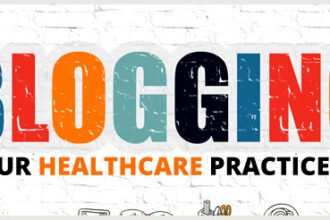It’s time for some New Year’s resolutions; and they have nothing to do with eating right, losing weight or exercising. Instead, they have everything to do with protecting against the organizational and financial stresses of data breaches—which have become an everyday disaster.
It’s time for some New Year’s resolutions; and they have nothing to do with eating right, losing weight or exercising. Instead, they have everything to do with protecting against the organizational and financial stresses of data breaches—which have become an everyday disaster.
As noted in a post last month, the Third Annual Benchmark Study on Patient Privacy & Data Security, reports that data breaches in healthcare are growing; insider negligence is the root cause; and mobile devices pose threats to patients’ protected health information (PHI). Despite the fact that 94percent of healthcare organizations surveyed suffered data breaches, data breaches don’t have to be disastrous if organizations take steps to operationalize pre-breach and post-breach processes to better protect patient data and minimize breach impact.
The results of this survey have lead to a few of us bing invited to share our recommendations for a healthier organization in 2013 and beyond:
1. Establish mobile device and Bring Your Own Device (BYOD) policies that include technical controls and employee and management procedures.
Rick Kam, CIPP/US, president and co-founder, ID Experts
2. Control the cloud or it’ll control you. Make it a point to fully understand what cloud service-level agreements mean in practice and then push for meaningful information on failover and disaster recovery practices used.”
Richard Santalesa, senior counsel, InfoLawGroup LLP
3. Have a current breach response plan that is ready and tested. This will help pave the way for a well-executed response that can mitigate the financial, legal and reputational harm caused by a security incident involving patient information.
Marcy Wilder, partner and director of global privacy and information management practice, Hogan Lovellis
4. Conduct small but focused risk assessments rotating control review on a monthly basis to continually understand and measure risk. Most importantly, have a plan to address the risk, through remediation, mitigation or risk transfer activities.
Chad Boeckmann, president and chief strategy officer, Secure Digital Solutions, LLC
5. Immunize mobile devices against viruses that might steal patient data.
Dr. Larry Ponemon, chairman and founder, Ponemon Institute
6. Attack your leadership team with phishing and other social engineering campaigns. Nothing raises awareness like catching people and correcting them on the spot—and it’s a lot more interesting than the annual 30-minute online security training.
Michael Boyd, Director of Information Security Management, Providence Health & Service
7. Use a checklist to evaluate periodically whether covered entities and business associates are in compliance with all privacy and security requirements. Sign and date the checklist to show that your organization is not guilty of “willful neglect” in complying with privacy and security laws.
Jim Pyles, founding partner, Powers, Pyles, Sutter & Verville, P.C.
8. Educate all staff to recognize applications, mobile devices and medical equipment that collect, contain or transmit patient information and/or biometric data; and train them to communicate the risk to those responsible for information security management.
Christina Thielst, FACHE, Vice President, Tower
9. Decide how to handle the residual risk of a data breach, how much risk to accept, and how much, if any, risk to transfer through cyber insurance.
Christine Marciano, President, Cyber Data Risk Managers LLC
10.Boards should ensure their organizations have robust, board-reviewed and approved security policies and procedures.
Larry W. Walker, president, The Walker Company
11. “Big data” is a source of both the disease and the cure for privacy and information security symptoms. Currently, we have to deal with data minimization, but in the future, look for applications that may collect broadly, but protect against unauthorized disclosure or misuse very, very well.
Jon Neiditz, partner, Nelson Mullins Riley & Scarborough LLP
Rick Kam, president and co-founder of ID Expertis isn’t a physician, but he believes “patient information is at risk for infection” and “organizations need to make a commitment to a healthier organization from top to bottom, otherwise a common cold data breach will turn into tuberculosis.” I have to agree and in some respects it is just another HAI – hospital acquired infection.
Also, one more recommendation is in order…. be careful with #6. It could lead to a bit of personal risk — otherwise known as a CLM or “career limiting move”.





